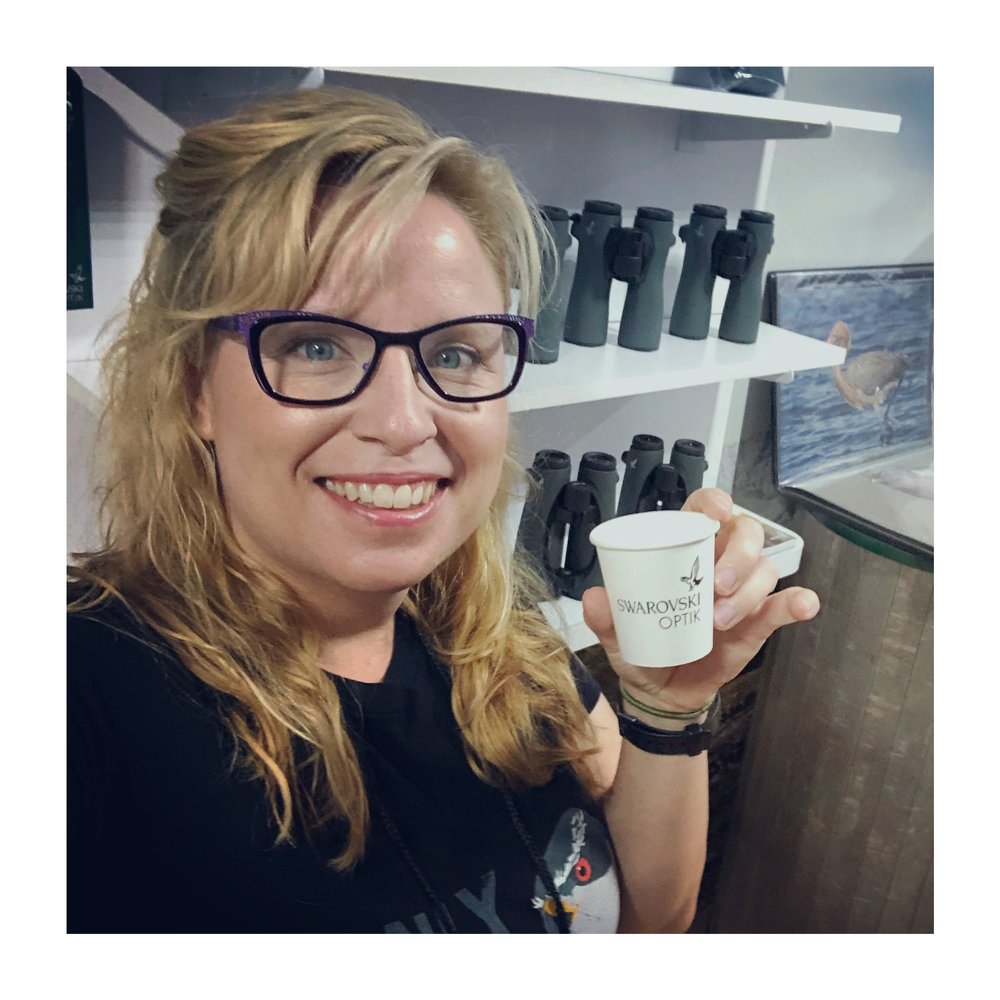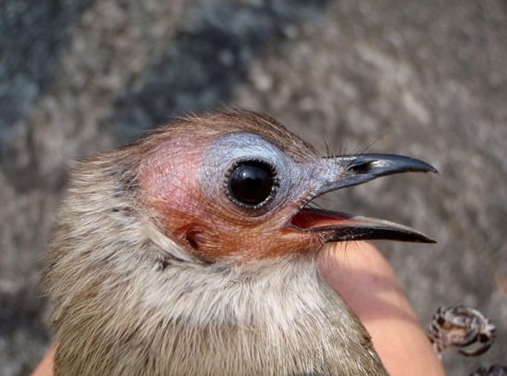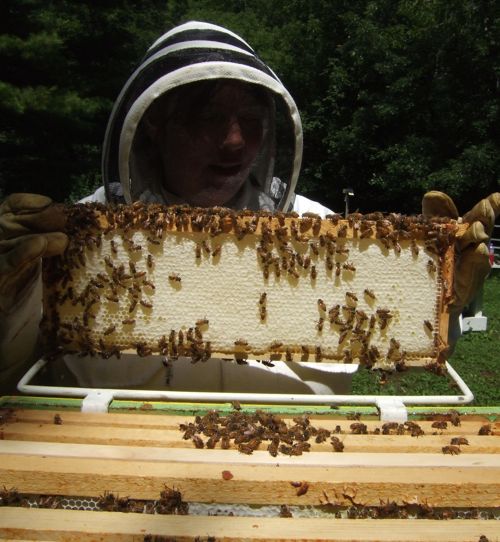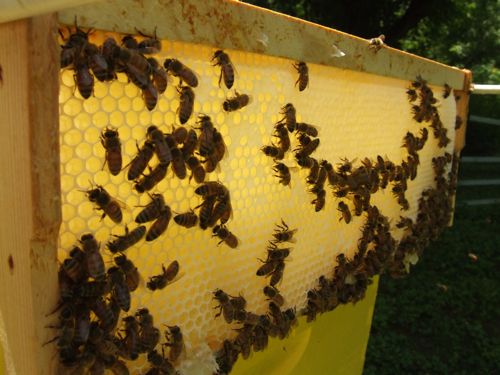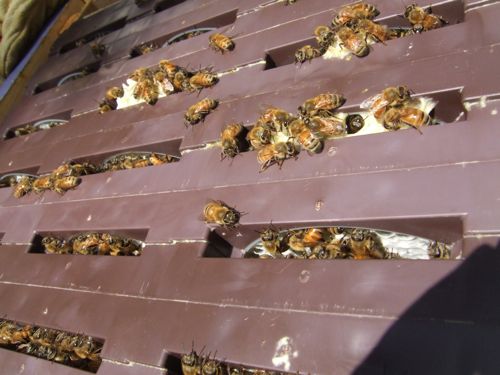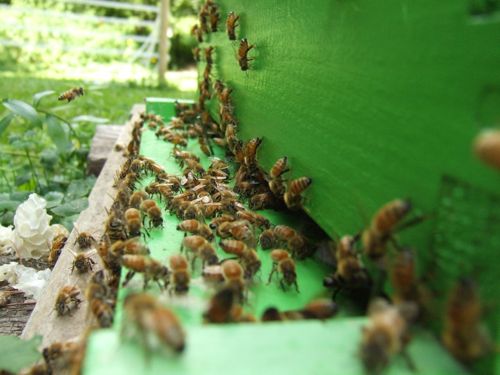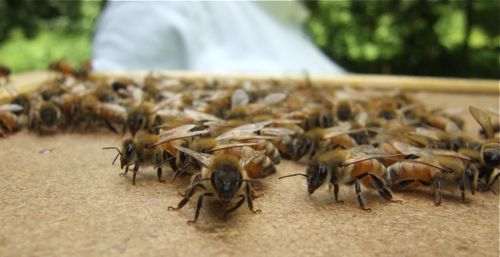I have been making so many changes this summer. Some have been evident with the blog and will be more evident in the coming weeks. Some have been in my day to day routine. For example, I've been learning how to band birds at Carpenter Nature Center and usually spend my Fridays (when I'm in town) there.

Check out this cedar waxwing that came in to the nets today at Carpenter. It's an adult (not tell tale streaking on the breast that would make it a juvenile).
What a gorgeous bird this is and beautiful study of powerful highlights--love that yellow tail tip. Oh, and get this, I was reading Cornell's All About Birds website (which makes a handy online field guide) and it says that waxwings with orange instead of yellow tail tips began appearing in the northeastern U.S. and southeastern Canada in the 1960s. The orange color is the result of a red pigment picked up from the berries of an introduced species of honeysuckle--crazy. Non-native plants can cause a slight color change in our native birds.
Check out the little wax tips on the secondary wing feathers of this birds. What a treat to see them up close! These are the reason this bird is called a waxwing. To the best of my knowledge, researchers have not figured out the purpose or function of them, but much like the yellow tail tip, if a waxwing eats enough of the above mentioned honeysuckle berries while it is growing a tail feather, the tip of the feather will be orange too.
However, recently I haven't been doing as much with the banding end of things are Carpenter. That's because I started volunteering my time with their education birds. I have volunteered at the University of Minnesota's Raptor Center since 1997, mostly working with their educational birds. However, with the economy, Carpenter has had to lose some of their staffing and asked for volunteers with bird handling skills to help them out. The Raptor Center is very well known, has over 400 volunteers and is a great place for a person to learn how to handle birds. Since Carpenter is in need and (much like Liam Neeson) I have a certain set of skills that can be of use, I took a leave of absence from TRC to help out Carpenter.
They have three education birds at Carpenter: a great horned owl, a red-tailed hawk, and a peregrine falcon who is still being trained in. Today, I got to help with that a little bit. He's getting used to being perched on a gloved hand (thanks to some great trainers volunteering their time), but he's still uncertain about people coming into his mew (falconry term for his cage) and gets frightened easily. He has an injured wing and cannot fly, so all of his perches have to be low enough for him to reach by a good leap.
I stepped into his mew with some fresh quail and he started running around all over. You train birds with positive reinforcement, so I crouched in a corner, did not make eye contact, watched in my peripheral vision and waited for him to settle. Unfortunately, that was on the ground on the other side of his mew. I waited until his posture relaxed a bit, and slowly set a piece of quail on one of his perches. He slowly made his way over to the perch. I made sure it was a dark red and juicy piece. He couldn't resist. He hopped up and began eating. I slowly moved my gloved hand with another piece of quail to the perch. He paused and stared at it, then continued to munch what he had. When he finished, he hopped up to my gloved hand.
I secured his jesses (the leather straps on his feet that are usually tied to leash) and stood up. I fed him the rest of the quail and he at ravenously. I had another quail for him in the kitchen, so when he finished, I put him back to the perch, stepped out of his mew and went to get it. This time when I returned, I approached slowly, he remained on his perch and stepped up beautifully. He's gradually learning that stepping up to the glove is a safe thing and he might even get some tasty food out of it. It was honor to be part of his training process and it felt good to know that I have the skills to help out with it (and a relief that I didn't undo any of the training he has received thus far).
So, in this tough economic time when so many organizations are hurting for funds (as are some of us) don't forget that your time can always be just as valuable.
Speaking of hurting for funds, did you hear about the nasty deal going down with Sportsman's Warehouse? According to a report at a Wall Street Journal blog, they have filed for Chapter 11. They have been selling the Duck Stamp which can be used as a waterfowl hunting license but more importantly, 98% of the $15 paid to get a stamp goes to habitat acquisition--it's a great purchase for hunters and non-hunters.
Sportsman's Warehouse is now refusing to turn over $629,415 it raised through the sale of federal duck hunting licenses and want to use it to pay back their creditors. As a result, the Department of the Interior is objecting to the company’s plan of reorganization, urging a judge to reject the plan until it makes it clear that the money will end up where it belongs with the Migratory Bird Fund and not the company or its creditors.
I'm sorry that a business is in trouble and trying to stay afloat, but using money from a fundraiser to bail your sorry butt out is wrong, wrong, wrong. Certainly will make me be a bit more choosy when I'm purchasing my outdoor gear.
